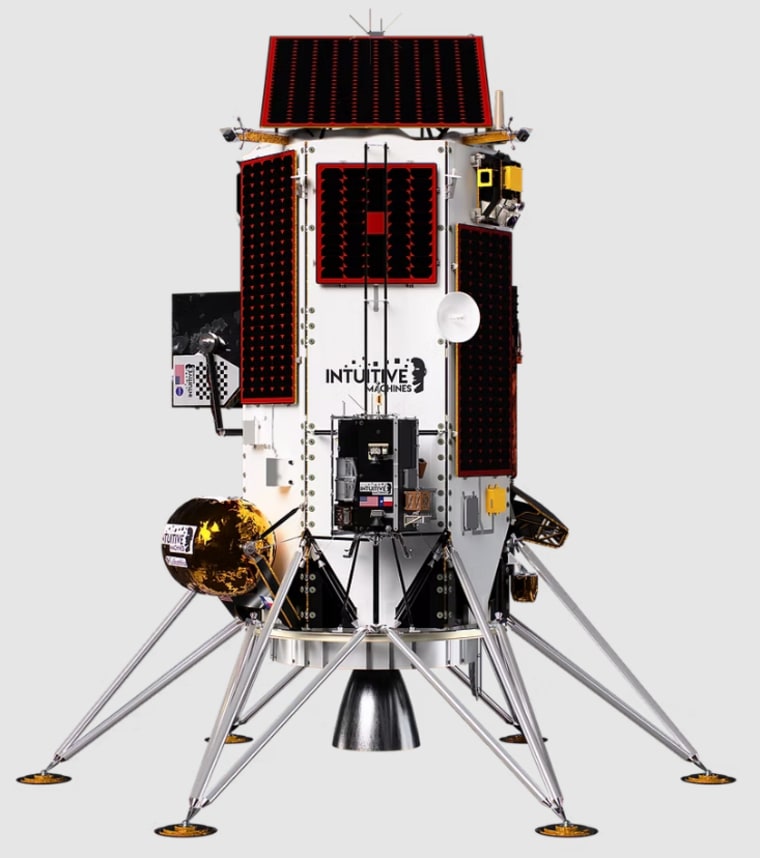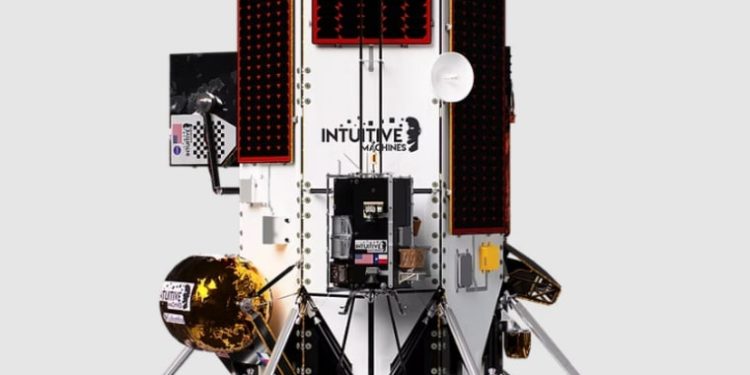For the second time in less than a week, an American spacecraft built in private will try to land on the moon.
The Lander robot, nicknamed Athena, was developed by the company based in intuitive machines. He embarked on space on February 26 and spent last week going to the moon.
About the size of a dishwasher, the six-legged job aims to touch a site in the southern polar region of the moon, then spend a week looking for the possible presence of water ice under the lunar surface.
The landing is scheduled for 12:32 p.m. Thursday. NASA TV will broadcast a live flow from the event from 11:30 am.
In case of success, Athena would be the second vehicle to tackle the Moon in five days. A separate robotic robotic built by Firefly Aerospace, which is also based in Texas, landed there on Sunday, in a sprawling basin 350 miles wide on the side of the moon (the side that always faces the earth).
The two missions are part of the NASA lunar payload sales program, which the agency has created to support the development of Moon Landers by private sector companies. More than a dozen American companies participate in the initiative, which is a key element of the wider objective of NASA to return astronauts to the moon.
NASA is ultimately plans to hire at least some of the companies to provide scientific experiences, technology and other cargoes to the moon.
Athena’s landing will be the second bithot for intuitive machines. The company entered the story in February 2024 by becoming the first to win a spacecraft built on trade on the moon. Last year’s feat was also the first time that an American spaceship has touched the moon in more than 50 years – since the Apollo 17 mission in 1972.

This theur, called Ulysses, ended up going on his side after landing, although the flight is always considered a success.
The two intuitive machinery missions targeted the southern polar zone of the moon. Ulysses landed near a crater called Malapert A, near the Lunar South Pole, and Athena will target a plateau on a giant mountain and down called Mons Mouton.
Scientists believe that water ice can be relatively abundant at the southern southern pole. Water is considered a critical resource for future missions equipped on the Moon, in particular for potential long -term stays.
Athena transports several Rovers on the Moon, including a suitcase size vehicle built by the company Lunar Outpost, based in Colorado, named MAPP (abbreviation of the mobile autonomous prospecting platform). The rover is designed to wander around the landing site and capture 3D images on the ground.
In addition, a rover the size of an inch known as “astroing”, developed by researchers from the Massachusetts Institute of Technology, should go on the roof of cartography to assess the health of the vehicle and take periodic temperature readings.
In addition, mission controllers plan to release a drone, nicknamed Grace, to make a series of hops around the Athena landing site. The robot should cover around 650 feet in four hops and could explore a nearby crater to search for traces of hydrogen and ice deposits, according to intuitive machines.
While ATHENA is on the lunar surface, the plan also requests it to test a 4G communication system developed by Nokia. Company officials said such a network could be used to relay communications, telemetry or other data between different space vessels on the Moon.
Moonmania will not end after this week: this summer, a tiny rover and a tiny rover developed by a Japanese company called Ispace will try to land on the moon, near the center of a large basin near the North Pole of the Moon called fridge pond.


